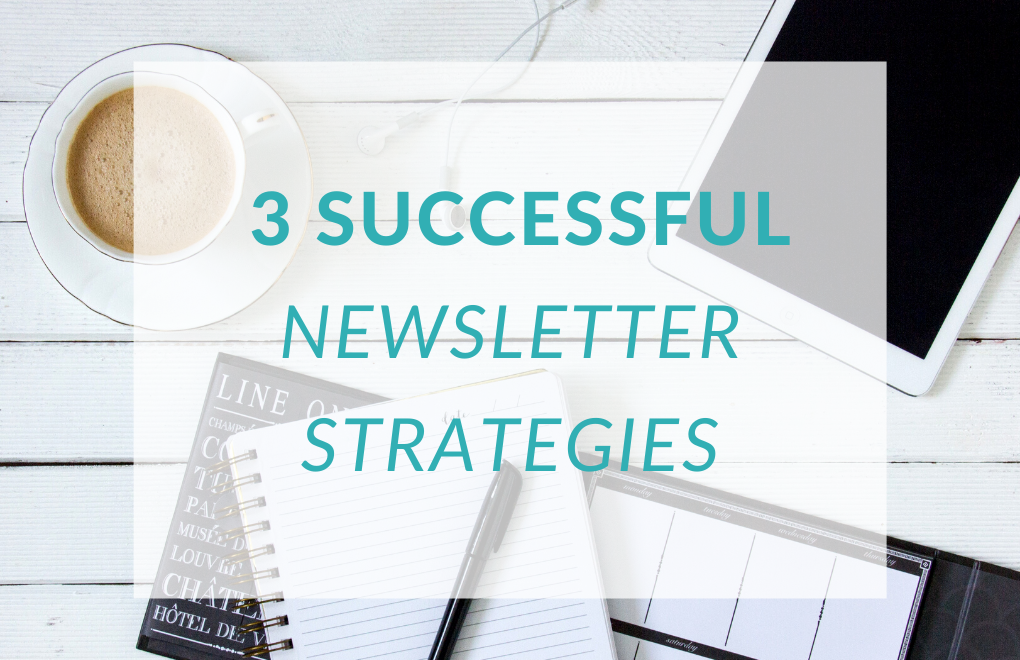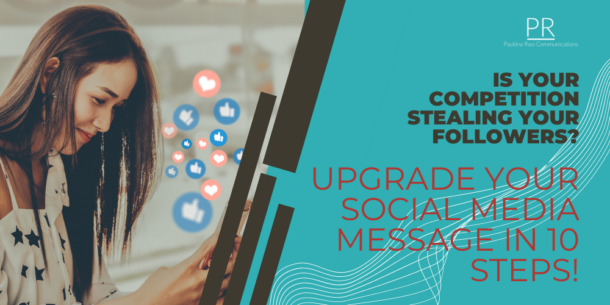Newsletters are the cornerstone of effective content marketing. These successful brands each use their newsletter differently – yet successfully – to gain new clients and make old ones come back. Learn from them!
Newsletters are a powerful content marketing tool.
Emails find their way to your ideal audience’s inbox, for them to read whenever it suits them.
Newsletters allow you to connect with them outside the hectic social media environment, and turn keen followers into paying clients quicker than social media posts or paid ad campaigns.
Still, in the world of ever-increasing content and overflowing inboxes, newsletters need to be valuable and meaningful for the recipients, to avoid being marked as spam or thrown into the virtual trash bin without ever being opened.
Here are three successful examples from very different businesses, who all use emails in their own ways.
Learn from their successes and pick the best one for your business.
Bookbinders Design: Newsletters share product updates and promotions
The most common way to use newsletters is to improve sales and share company news, product updates and special promotions. This is what the Swedish design stationery company Bookbinders Design does with their email marketing.
Bookbinder’s Design sends a colour-coded splash of inspiration to their fans’ email inboxes every week or so. The emails are beautifully designed, to reflect the company’s visual identity and mission to beautify our offices while organising our lives.
Throughout the emails, stylish photos of stationary products form the heart and soul of these email updates, with occasional promotion codes and exclusive limited-time offers.
Zapier: Emails shower target group with value
The automation tool application Zapier has a very different approach to their newsletter: they barely mention the product and share promotion codes with extreme caution.
If you’ve been following my blog or LinkedIn feed for a while, you’ve probably heard me praise their blog earlier, since their newsletter strategy is tightly linked to their value-packed blog. Every Monday, Wednesday and Friday, without fail, I receive an email from Deb from Zapier.
In each email, Deb sends links to topical blog posts on their site. Practical tips on entrepreneurship, advice to improve productivity and every now and then, ways to make more of the platform itself.
The whole process is packed with value without a hint of pressure towards upgrading to a paid or a more expensive subscription. Zapier relies on showering its followers with value to the point where they are ready to share the news with their friends or become paying clients themselves.
Calm: Newsletter strengthens client relationships
The weekly newsletter of the meditation and mindfulness app Calm is called “Weekly Wind Down” and as opposed to the other two examples, it’s sent for the people who’ve already paid for their subscription.
The goal of the email is to help paying clients get more value for their membership and to connect them even more tightly to the app and the community around it.
Calm’s “Weekly Wind Down” newsletter highlights new content on the app and offers tips to create a mindful week. It aligns beautifully with the company’s mission to bring mindfulness to everyday life, as it’s concise though packed with value.
This newsletter focuses on pampering existing, paying clients with care, advice and value and helps them stick to their meditation habits, with the goal to keep them as clients for a longer period of time.
Which Email Marketing Strategy Works Best for Small Businesses?
All the above-mentioned newsletters are great and personally I’ve subscribed to them a long time ago, without really getting bored. Which is the best one to adapt then?
The Bookbinders Design’s more sales-focused approach has the perk of improving sales on a continuous basis. As stationery is something avid users buy relatively often, the chances of an email arriving just when they need it is rather high as well.
The company runs the risk of upsetting fans who are less eager to buy, and this kind of strategy works less effectively for high-end services and purchases people do only every now and then.
Zapier’s strategy relies on the power of content marketing and supports the company’s commercial goals by building a community of followers around their free tips and advice. While this strategy doesn’t necessarily yield immediate results, it works beautifully in the mid- and long-term – if you have enough resources to deliver tons of new content each week and month.
If you pick this strategy, build it up one step at a time and leverage repurposing, especially if you’re dealing with a small team and tight budgets.
Finally, Calm’s strategy to pamper paying customers is a good fit for subscription-based businesses where client retention is a key success factor. If this sounds appealing to you, remember that you can also start with a monthly or quarterly newsletter to your clients!
5 Questions to Get Started
When choosing the right strategy for your team and business, answer the following questions:
- What is the business goal you want to achieve via email marketing?
- How would a newsletter serve your clients?
- What kind of resources do you need to execute the plan?
- How do you measure the success of your email marketing?
- What kind of content would your newsletter include?
For more content ideas and inspiration, download my Free Content Guide below. It comes with 10 content ideas that work well on emails, too!
If the whole strategy part behind a newsletter causes you grey hair or you need help with writing these emails, let’s hop on a call and talk more. Schedule your Content Strategy Call and let’s figure out your next step together.







Oh my gosh. Bookbinders. I’m in love. I’m signing up for their newsletter just to follow (and someday buy) all the pretty.
Good article, and good reflection questions. I’m creating a consistent newsletter now, but have no strategy – yet. Will be thinking on that in the near future. Unsure the best way to go about it for providing an experience (vs a hard product). 🙂
Yes, Bookbinders is lovely! This article might be helpful to you when working on your newsletter strategy:
https://pauliinarasi.com/2020/01/21/why-you-need-a-newsletter-and-how-to-start-it-the-easy-way/
Thanks!